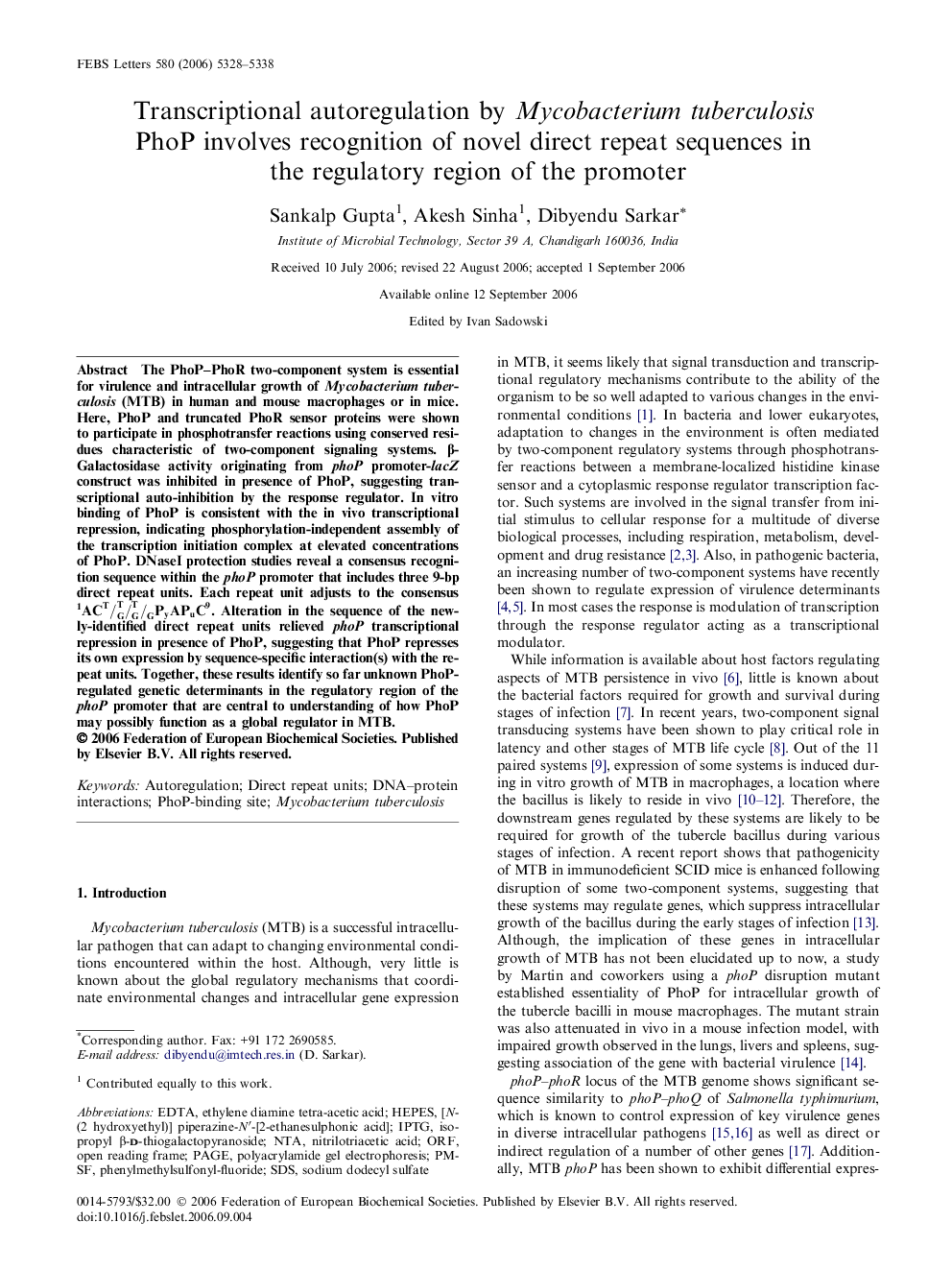| Article ID | Journal | Published Year | Pages | File Type |
|---|---|---|---|---|
| 2051047 | FEBS Letters | 2006 | 11 Pages |
The PhoP–PhoR two-component system is essential for virulence and intracellular growth of Mycobacterium tuberculosis (MTB) in human and mouse macrophages or in mice. Here, PhoP and truncated PhoR sensor proteins were shown to participate in phosphotransfer reactions using conserved residues characteristic of two-component signaling systems. β-Galactosidase activity originating from phoP promoter-lacZ construct was inhibited in presence of PhoP, suggesting transcriptional auto-inhibition by the response regulator. In vitro binding of PhoP is consistent with the in vivo transcriptional repression, indicating phosphorylation-independent assembly of the transcription initiation complex at elevated concentrations of PhoP. DNaseI protection studies reveal a consensus recognition sequence within the phoP promoter that includes three 9-bp direct repeat units. Each repeat unit adjusts to the consensus 1ACT/GT/GT/GPyAPuC9. Alteration in the sequence of the newly-identified direct repeat units relieved phoP transcriptional repression in presence of PhoP, suggesting that PhoP represses its own expression by sequence-specific interaction(s) with the repeat units. Together, these results identify so far unknown PhoP-regulated genetic determinants in the regulatory region of the phoP promoter that are central to understanding of how PhoP may possibly function as a global regulator in MTB.
